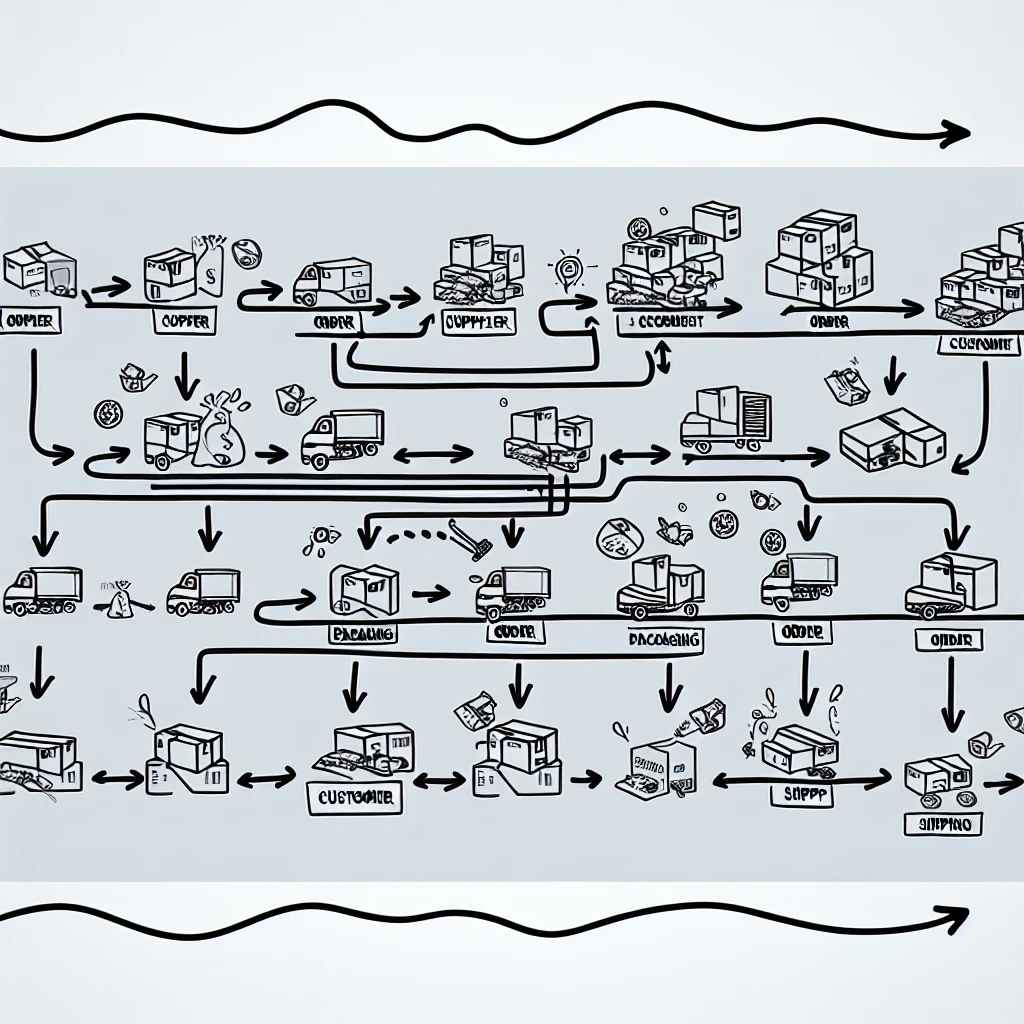Understanding Inventory Accounting
If you're running an ecommerce business, understanding inventory accounting isn't just a good-to-know; it's an absolute must. Why? Because inventory is the heart of your business and how you account for it can make or break your financials. Think of inventory as the blood pumping through the veins of your ecommerce operation, keeping it alive and thriving.
At its core, inventory accounting is the method by which businesses track and manage the goods available for sale. It's about knowing what you have, what it's worth, and how its value changes over time. This is crucial because the value of your inventory directly affects your profit margins, tax calculations, and overall financial health.
Now, let's dive into the nitty-gritty. The basic concepts of inventory accounting revolve around tracking the cost of your inventory throughout its lifecycle - from the moment you purchase it from your suppliers until it ends up in the hands of a happy customer. But it's not just about counting boxes or keeping tabs on SKU numbers. It's about understanding the value of your inventory at any given moment, which can fluctuate based on market conditions, seasonality, and consumer demand.
One of the biggest challenges in inventory accounting is dealing with the complexities of valuation. There are several methods to value your inventory, each with its own set of rules and implications for your business's bottom line. Whether you choose FIFO (First-In, First-Out), LIFO (Last-In, First-Out), or WAC (Weighted Average Cost), the method you choose will impact how you report income and expenses, and ultimately, how you make strategic decisions for your business.
But why is this so important? Because accurate inventory accounting helps you avoid overstocking or understocking, which can lead to lost sales or excessive carrying costs. It informs your purchasing decisions, helps you set competitive pricing, and ensures you're not caught off guard during tax season. In short, it's the backbone of your financial strategy and a critical component of successful ecommerce management.
So, whether you're a seasoned ecommerce veteran or just starting out, take the time to understand the principles of inventory accounting. It's not just about compliance or bookkeeping; it's about gaining a strategic advantage in the competitive world of online retail. After all, knowledge is power, and in the world of ecommerce, that power translates into profitability.
Inventory Valuation Methods
When it comes to inventory valuation methods, think of them as different lenses through which you can view your financial landscape - each offering a unique perspective that can significantly alter your business's reported earnings and tax liabilities. Let's break down the three most common methods: FIFO, LIFO, and Weighted Average, and their impact on ecommerce accounting.
FIFO (First-In, First-Out) is like the early bird that gets the worm. This method assumes that the first items purchased are the first ones sold. It's particularly beneficial in times of rising prices because it allocates the oldest (and typically cheaper) inventory costs to the cost of goods sold (COGS), resulting in higher net income and, consequently, higher taxes. For ecommerce businesses, this could mean a more attractive bottom line on the financial statements, which can be advantageous when seeking investors or selling the business.
LIFO (Last-In, First-Out), on the other hand, is akin to the last-minute shopper grabbing the latest items off the shelf. This method assumes that the most recently purchased items are sold first. In an inflationary economy, LIFO leads to higher COGS as it reflects the most recent (and often higher) prices, which can reduce taxable income and thus, taxes owed. However, it's worth noting that LIFO isn't widely accepted outside the United States, and its use can complicate international business dealings.
The Weighted Average Cost (WAC) method is the great equalizer, smoothing out the peaks and valleys by averaging the cost of all items available for sale during the period. This method is less susceptible to price fluctuations, offering a more stable view of inventory costs and profitability. For ecommerce businesses dealing with a vast array of products and fluctuating prices, WAC can simplify accounting and provide a consistent approach to inventory valuation.
Each method has its strategic benefits and potential drawbacks, depending on your business model, market conditions, and long-term goals. FIFO can inflate your company's value on paper, making it more appealing in the short term. LIFO can help conserve cash by reducing tax burdens in the short term, but may not be sustainable or practical for global businesses. WAC offers a balanced approach but may mask the impact of price changes on inventory value over time.
Ultimately, the choice of inventory valuation method is a strategic decision that should align with your ecommerce business's financial goals and operational realities. It's not a decision to be taken lightly, as it can influence everything from pricing strategies to tax planning. So, weigh your options carefully, and consider consulting with a financial expert to determine the best path forward for your ecommerce venture.
Managing Cost of Goods Sold
Now, let's pivot to the critical aspect of managing the Cost of Goods Sold (COGS), a key figure that can make or break your ecommerce business's profitability. Accurately calculating and managing COGS is not just an accounting practice; it's a strategic maneuver that requires a keen understanding of your inventory and the market dynamics. As ecommerce continues to grow, the ability to adeptly manage COGS becomes even more paramount.
First and foremost, maintaining meticulous records is non-negotiable. You can't manage what you don't measure. Implementing a robust inventory management system will help you track your inventory levels, sales, and purchases in real-time, providing the data needed to calculate COGS with precision. This real-time data is crucial for making informed decisions about pricing, promotions, and purchasing.
Another strategy is to negotiate with suppliers for better pricing or payment terms. This can directly reduce your COGS and improve cash flow, allowing you to reinvest in your business or cushion against market fluctuations. Remember, every dollar saved in COGS is a dollar added to your bottom line.
It's also important to consider the implications of excess stock. Overstocking ties up capital and can lead to increased storage costs, which in turn affects your COGS. Conversely, understocking can result in lost sales and customer dissatisfaction. Striking the right balance through demand forecasting and just-in-time inventory can optimize your stock levels and COGS.
Don't overlook the impact of returns and damaged goods. These can inflate your COGS if not managed properly. A streamlined returns process and a clear policy for handling damaged goods can mitigate these costs and keep your COGS in check.
Lastly, regular audits of your inventory can uncover discrepancies and prevent losses. Whether it's shrinkage, theft, or administrative errors, identifying these issues promptly can save you from a COGS nightmare.
In conclusion, managing COGS is a multifaceted challenge that requires a strategic approach. By keeping accurate records, negotiating better deals with suppliers, optimizing inventory levels, managing returns and damages effectively, and conducting regular audits, you can gain control over your COGS and, by extension, over your ecommerce business's financial health. Remember, in the world of ecommerce, precision in managing COGS isn't just about numbers—it's about sustaining and growing your business in a competitive marketplace.







